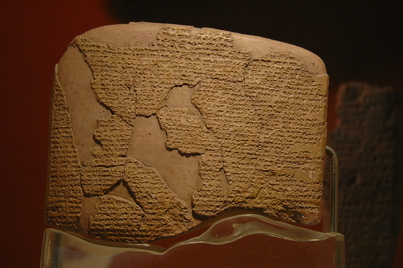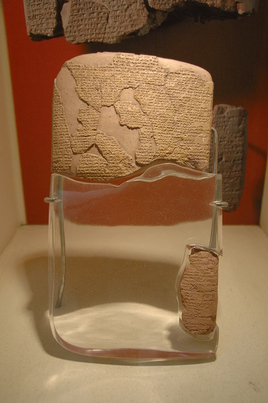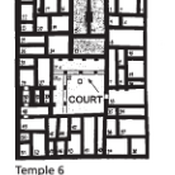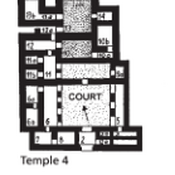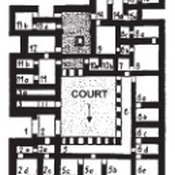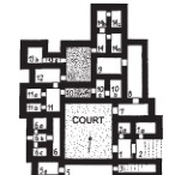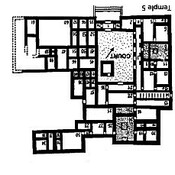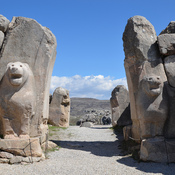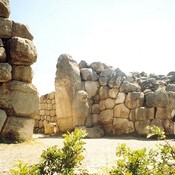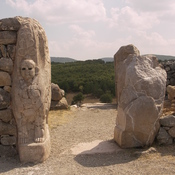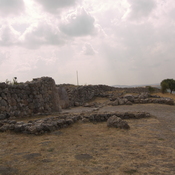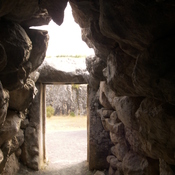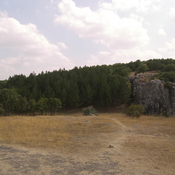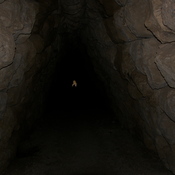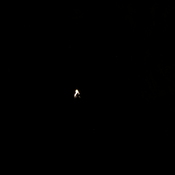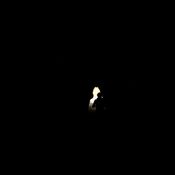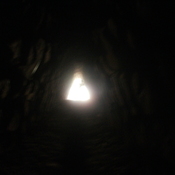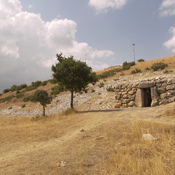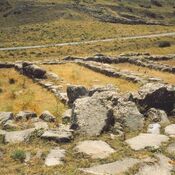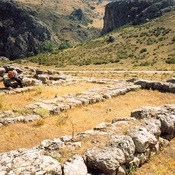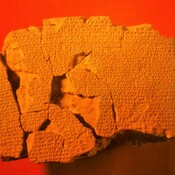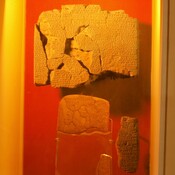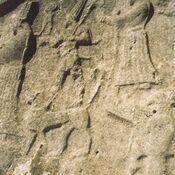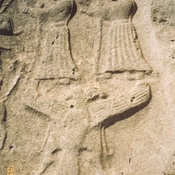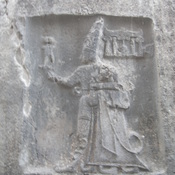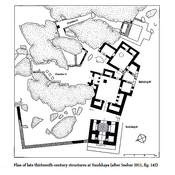Es gibt noch keine deutschsprachige Anmerkungen. Präsentiert wirden Anmerkungen auf English.
The very first traces of the Chalcolitthic settlement are from the 6th millennium BC . There were small hamlets scattered over the rocky terrain. At the end of the Early Bronze Age – ca. 2500 BC, Hattians original people of Anatolia set up their town here and called it Hattush. During the Middle Bronze Age under Hattians Hattush grew into a important city. The city was located on a mountain slope at the southern end of a small fertile plain. Assyrian merchants from Assur established here in the 19th a Karum - trading post. These Assyrian traders first introduced writing to Anatolia. The Assyrian Karum existed well in the 18th century. Around 1700 BC king Anitta from Kussar destroyed and burnt down the city and also put a curse on the site : At night I took the city by force; I have sown weeds in its place. Should any king after me attempt to resettle Hattush, may the Weathergod of Heaven strike him down.
Nevertheless king Labarna heir to the throne of Kassura, defeat the enemies in central Anatolia and took the name of Hattusili I, the "one from Hattusa" then re-builded Hattusa which becomes Hittite capital. 27 Hittite Kings of Hatti are known by their names. During Hittite Empire within the walls of Hattusa a great number of structures were built, among them many temples - houses for "the Thousand Gods of the Hatti Land". Around 1200 BC the city was destroyed together with the Hittite Empire itself. The site was abandoned until 800 BC, when a modest Phrygian settlement appeared. In 585 BC all the Central Anatolian land east of the river Halys River (modern Kızılırmak) fell into the hands of the Persian Medes. Then Perschian Achemenids took the control of Anatolia after Battle of Pteria, the Battle of Thymbra and the Siege of Sardis in 547 BC. However still inhabited Hattusha slowly disappeared below the historical horizon.
Sources:
- James G. Macqueen, The Hittites: And Their Contemporaries in Asia Minor, rev. eds., London, Thames and Hudson 1986, pp. diffr.
- O. Puchstein et al., « Zweiter Jahresbericht über die Ausgrabungen in Baalbek », JDAI 17, 1902, pp. 87-124
- Hermann Genz, Dirk Paul Mielke eds., Insights into Hittite History and Archaeology. Colloquia Antiqua 2, 2011, pp. 1-29
- Jürgen Seeher, Chronology in Hattuta: New Approaches to an Old Problem, in: Mielke, Schoop, Seeher (ed.), Structuring and Dating in Hittite Archaeology. BYZAS 4 (2006), pp. 197-213
- Maciej Popko, Huryci, Warszawa: Państwowy Instytut Wydawniczy, 2005,
The very first traces of the Chalcolitthic settlement are from the 6th millennium BC . There were small hamlets scattered over the rocky terrain. At the end of the Early Bronze Age – ca. 2500 BC, Hattians original people of Anatolia set up their town here and called it Hattush. During the Middle Bronze Age under Hattians Hattush grew into a important city. The city was located on a mountain slope at the southern end of a small fertile plain. Assyrian merchants from Assur established here in the 19th a Karum - trading post. These Assyrian traders first introduced writing to Anatolia. The Assyrian Karum existed well in the 18th century. Around 1700 BC king Anitta from Kussar destroyed and burnt down the city and also put a curse on the site : At night I took the city by force; I have sown weeds in its place. Should any king after me attempt to resettle Hattush, may the Weathergod of Heaven strike him down.
Nevertheless king Labarna heir to the throne of Kassura, defeat the enemies in central Anatolia and took the name of Hattusili I, the "one from Hattusa" then re-builded Hattusa which becomes Hittite capital. 27 Hittite Kings of Hatti are known by their names. During Hittite Empire within the walls of Hattusa a great number of structures were built, among them many temples - houses for "the Thousand Gods of the Hatti Land". Around 1200 BC the city was destroyed together with the Hittite Empire itself. The site was abandoned until 800 BC, when a modest Phrygian settlement appeared. In 585 BC all the Central Anatolian land east of the river Halys River (modern Kızılırmak) fell into the hands of the Persian Medes. Then Perschian Achemenids took the control of Anatolia after Battle of Pteria, the Battle of Thymbra and the Siege of Sardis in 547 BC. However still inhabited Hattusha slowly disappeared below the historical horizon.
Sources:
- James G. Macqueen, The Hittites: And Their Contemporaries in Asia Minor, rev. eds., London, Thames and Hudson 1986, pp. diffr.
- O. Puchstein et al., « Zweiter Jahresbericht über die Ausgrabungen in Baalbek », JDAI 17, 1902, pp. 87-124
- Hermann Genz, Dirk Paul Mielke eds., Insights into Hittite History and Archaeology. Colloquia Antiqua 2, 2011, pp. 1-29
- Jürgen Seeher, Chronology in Hattuta: New Approaches to an Old Problem, in: Mielke, Schoop, Seeher (ed.), Structuring and Dating in Hittite Archaeology. BYZAS 4 (2006), pp. 197-213
- Maciej Popko, Huryci, Warszawa: Państwowy Instytut Wydawniczy, 2005,
Hoofdstad van de Hittieten


